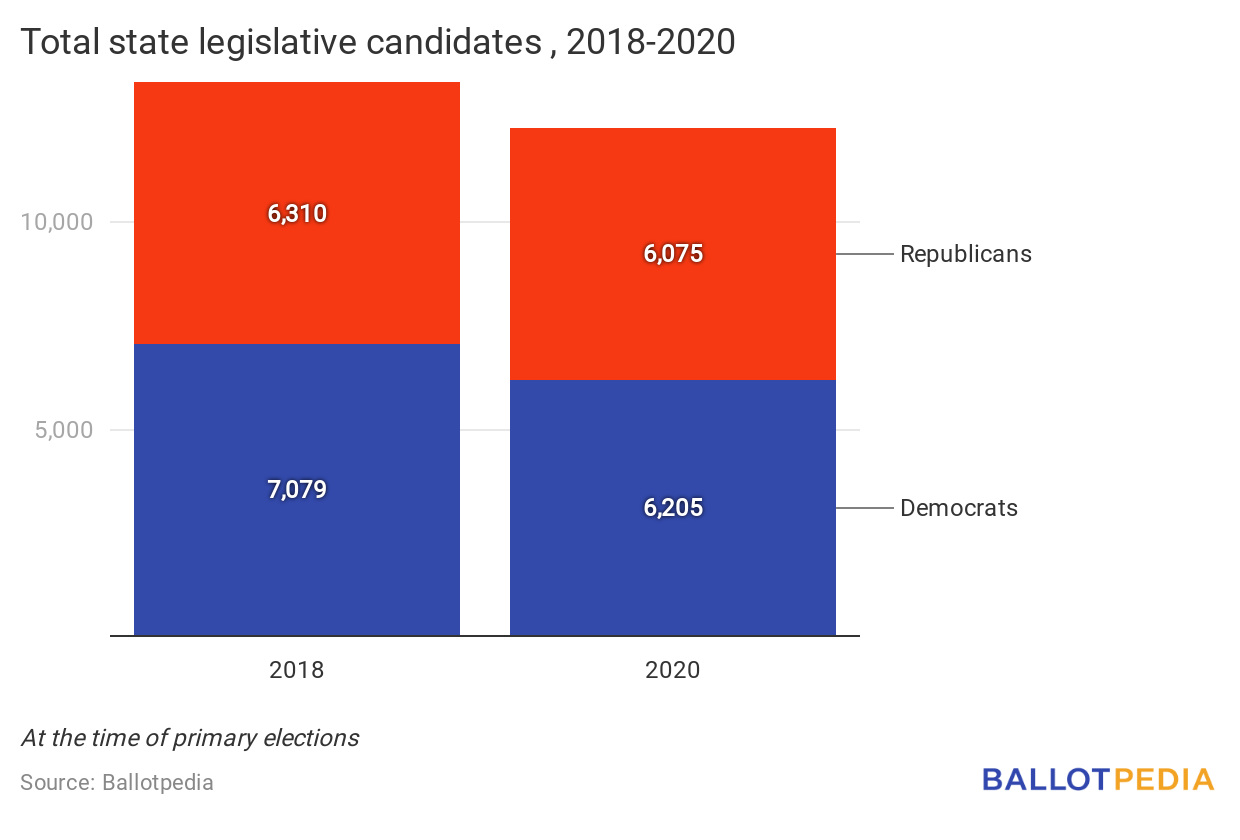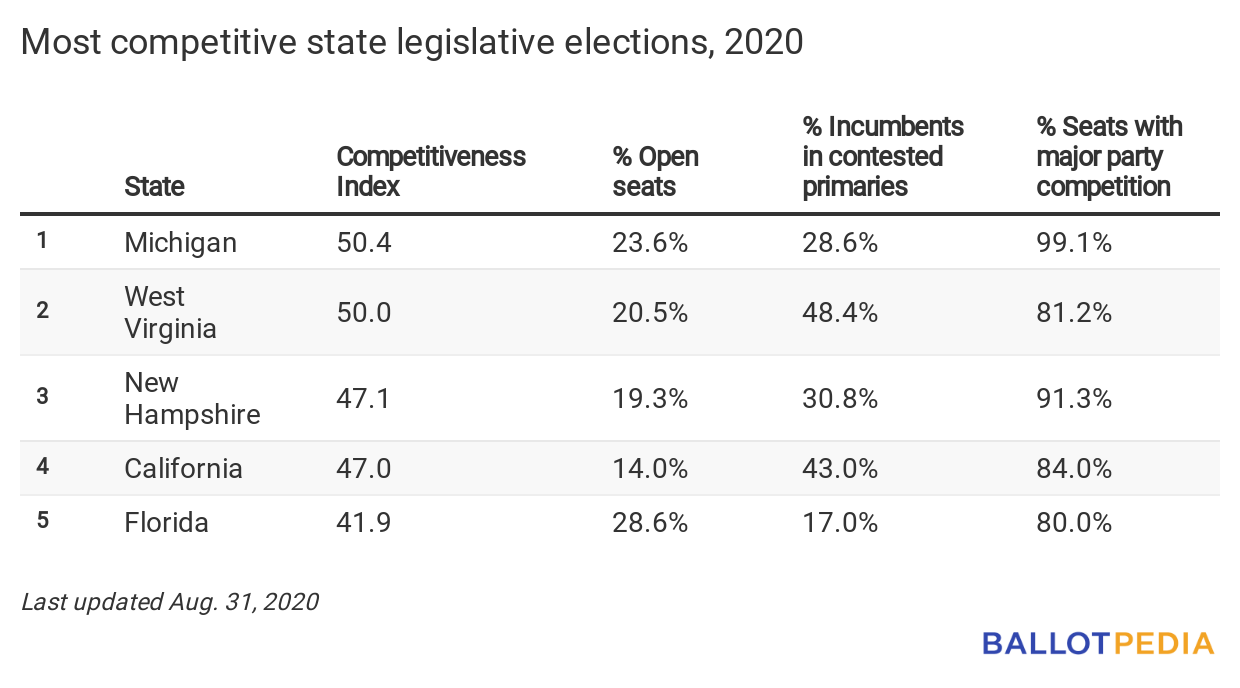Eight percent fewer candidates are running for state legislative office in 2020 versus 2018
We’ve finished crunching the numbers on our 10th annual state legislative elections competitiveness research. Over the next four days, I’ll bring some highlights and interesting statistics from this report that we debuted in 2010.
The number of candidates running for state legislative seats is down eight percent this year compared to 2018. A total of 12,280 major-party candidates are running in 2020, a 1,109-candidate decrease from last year. The number of Democratic state legislative candidates decreased 12.3% and Republican candidates decreased 3.7% from 2018 to 2020

Ballotpedia uses three factors to analyze the competitiveness of a state's legislative elections:
-
how many incumbents filed for re-election
-
how many incumbents have contested primaries
-
how many seats are contested between a Democratic and a Republican candidate in the general election.
These factors are then averaged to create a Competitiveness Index for every state.
Nationwide, state legislative elections this year have an overall Competitiveness Index of 33.4 out of 100. The Competitiveness Index for 2018 was 36.0. The 2020 elections are more competitive than 2016 (32.1) and the decade average (33.0).
The state with the highest composite score and, by extension, the most competitive state legislative elections this year is Michigan, followed by West Virginia, New Hampshire, California, and Florida. The five states with the lowest composite scores are Massachusetts, Delaware, Arkansas, Rhode Island, and Illinois.


Our annual report contains lots of historical data, including analyses of open seats and the numbers of incumbents facing competition in party primaries. I can’t wait to share some of this really neat data with you in the Brew this whole week, but if you can’t wait to dive deeply into the numbers, you can click the link below.
|